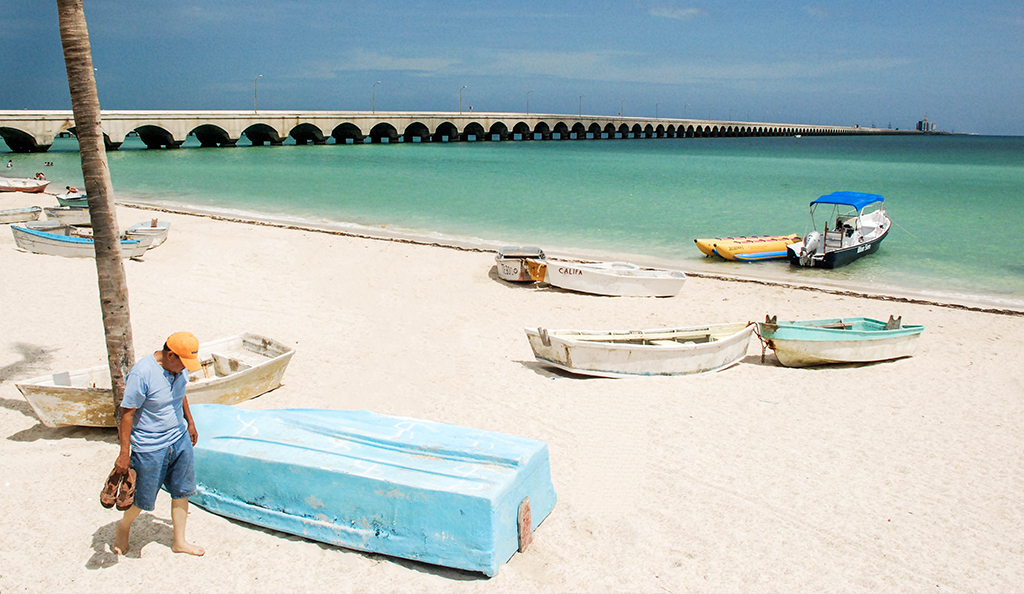Beaches
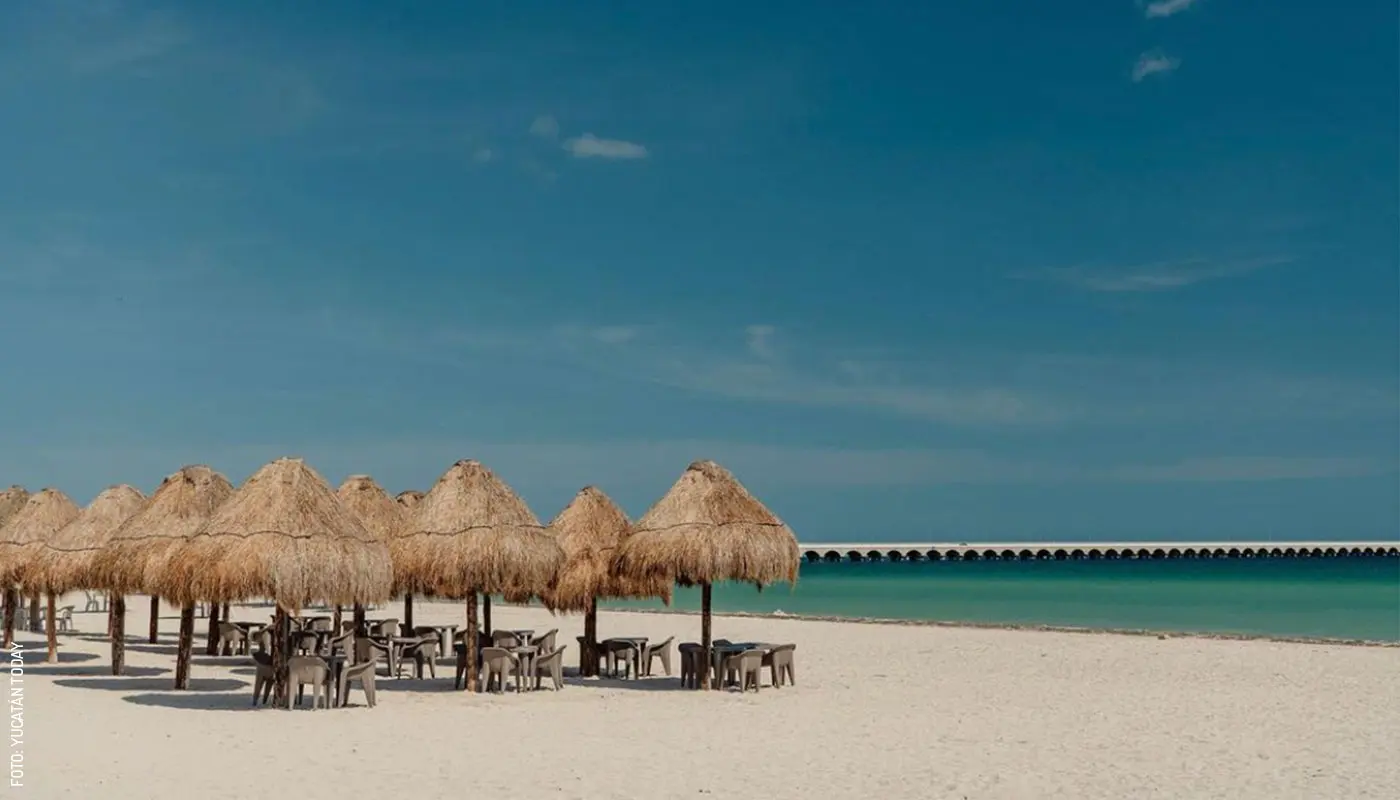
Many people from Mérida and other towns have built their summer houses here. These are for rent out of season, from September to June, with the exception of Easter.
From west to east on the Yucatan coast
The port of Celestún, located 96 kilometers (60 miles) west of Mérida, has been one of Yucatán's most visited destinations for decades. This is largely due to Celestún being home to one of the world's largest (and pinkest) colonies of flamingos, especially numerous from November to March. The brackish (mix of fresh and saltwater) water in this area provides the perfect environment for the flamingos' favorite foods, which is what gives them their vibrant reddish hues.
The safest way to spot these birds and appreciate Celestún's natural beauty is through a motorboat tour. At the entrance to the port, you'll find a visitor center with parking, restrooms, a shop, and the dock.

The tour has a fixed rate of $3,000 pesos per boat, accommodating up to six adults (or four adults and two children); you might find other travelers willing to share the ride if you’re traveling with a smaller party. The tour lasts just over an hour and includes visits to the flamingo area, a mangrove tour, and access to the Baldiosera freshwater spring, where you can swim.
There are also tour operators offering trips departing from the beach; if you're traveling with young children or prefer a more relaxed tour, the visitor center (which departs from the wave-free estuary) might be a better option for your group.
If offered any tours departing from a site other than the visitor center, make sure the guides are certified and that the tour complies with all necessary safety guidelines. Even more importantly, do not be tempted into getting too close to the flamingos; they startle easily, and when large groups of them take flight in panic, it often results in injured birds and many long, broken legs. Finally, always follow your guides' instructions.
Getting to Celestún from Mérida: By car, take the Tetiz exit from the Periférico and follow the signs; the journey will take about an hour. By public transport, you can take a shared taxi (at Calle 67 x 48 and Av. Primero de Mayo, Centro); the trip takes around 75 minutes, but departure times aren't fixed. The fare is approximately $65 pesos.

.webp)
Sisal
Sisal is a Magical Town in Mexico, the only one on the Yucatecan coast. It is a port of just over 1,600 inhabitants that welcomes visitors with open arms, a place with great natural attractions to visit, care for and admire, lodging options and restaurants to enjoy fresh fish or seafood. A nature refuge, a paradise of flora and fauna one hour away from Mérida, that will make you want to go back every time you can.
Visit the nature reserve with canals, an eye of water so crystal clear that it will be inevitable that you jump in immediately. These little paradises are suitable for small groups. Treat nature with respect by not using blockers or leaving trash.
In the center you can visit the Fort of Santiago, the pier, the Monifato house and the beautiful beach, ideal for walks or simply spending a day under an umbrella or palapa. Sisal beach is always a place where you can do nothing and have a good time.
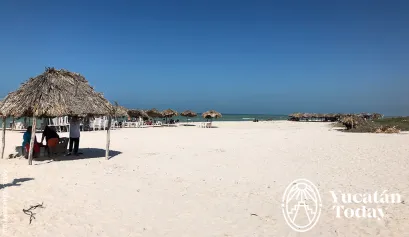
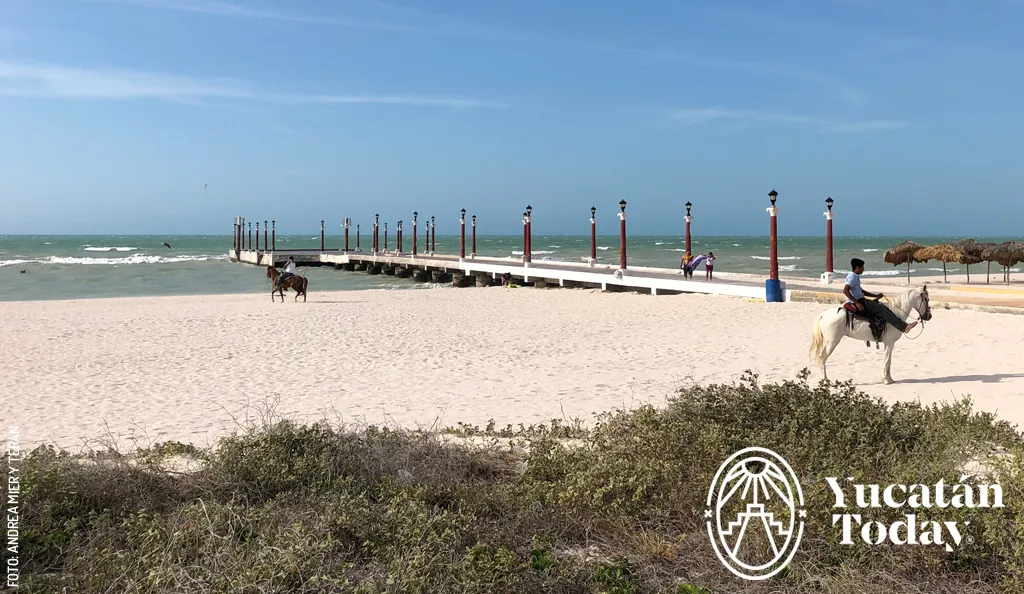
.webp)
Chuburná Puerto
Chuburná Puerto sits at the western end of Yucatán's coastal highway. The town boasts a lively pier and several restaurants, bustling especially during the summer months (when locals flock to the port for their July and August "Temporada" season) and in winter (when folks from colder climates come to bask in the warmth).
But what truly sets Chuburná apart are its natural treasures. Close to the heart of town lies Isla Columpios, accessible only by private boat or tour, offering an idyllic retreat. Then there's La Carbonera, a passage between the lagoon and the sea, and at the far western edge of town, Playón Las Dunas awaits—a sprawling public beach perfect for daytime picnics or moonlit strolls. For those craving a rustic getaway, it's even an ideal spot for camping under the stars.
How to get to Chuburná Puerto from Mérida: From the Mérida-Progreso highway, simply take the turnoff to Chelem and continue west until you reach Chuburná. Alternatively, if you're coming from the west side of the city, you can utilize the new highway cutting through the towns of Cheumán and Sierra Papacal.
.webp)
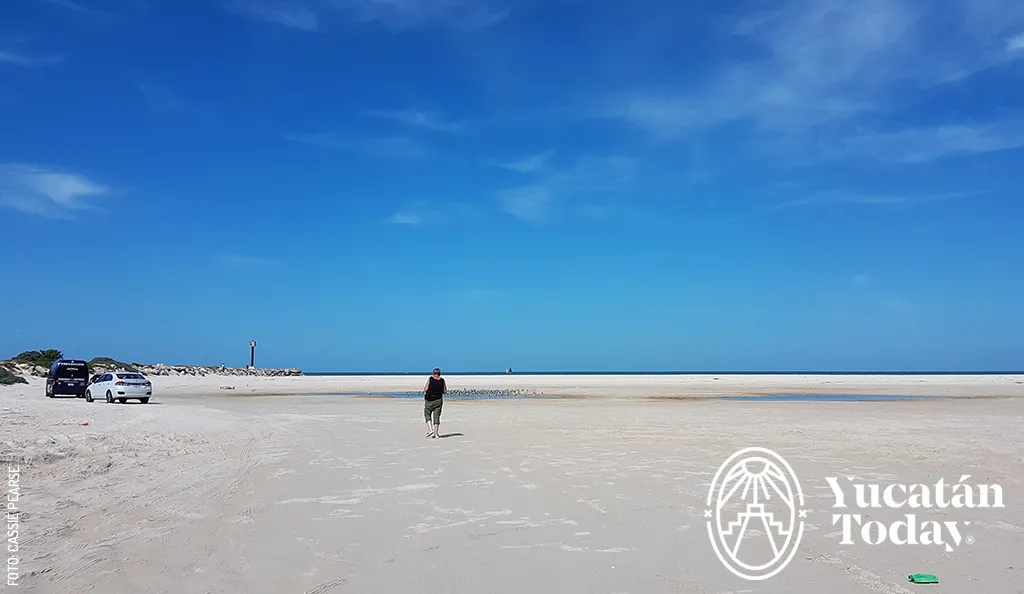
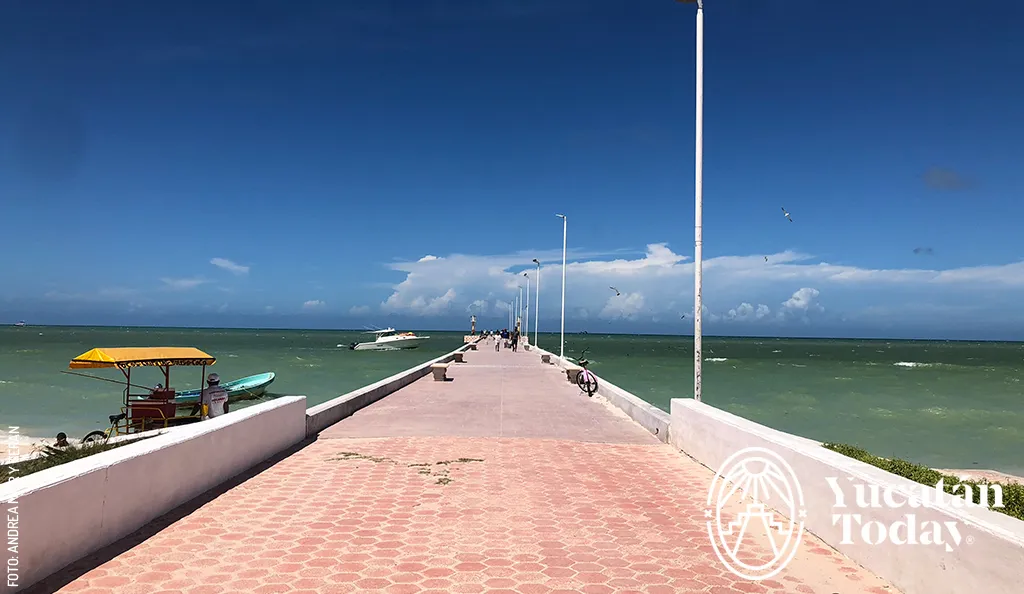
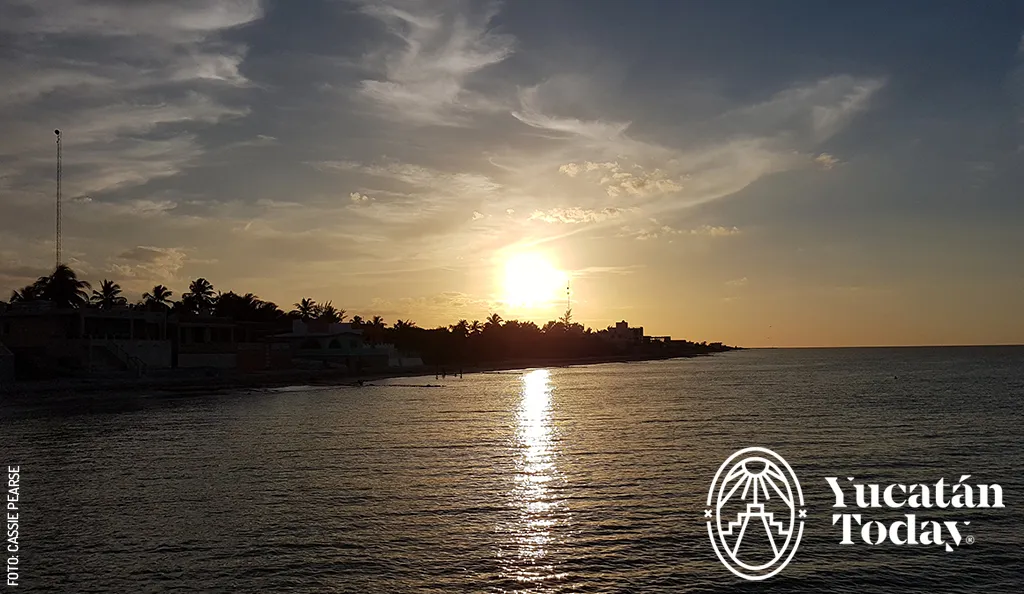
Chelem
If you are looking for an authentic Mexican experience in a clean, quiet fishing village, Chelem is the place. Without big hotels, timeshare hookers, traffic and bright lights, Chelem is a picturesque port.
You can get to Chelem by public transportation or by rented car. Once there, you will find the Main Plaza, the municipal building with its arches, the church, a local market, many small restaurants with food based on fish and seafood, and some pleasant beaches. If you stay in Chelem, you will see that you can walk to the Plaza and observe the daily life of the local people.
Chelem is a very popular place among "snowbirds", people who come from the US and Canada to spend the winter. Something fun and interesting to do in Chelem is to visit the estuary by boat to see the flamingos and the waterhole with Ecoturismo Ría de Chelem.

Progreso de Castro is located 36 km north of Mérida. A small coastal town along the Yucatan coast, famous for its splendid pier, which extends gracefully into the blue waters of the Gulf of Mexico. This iconic landmark not only serves as a vital hub for maritime trade but also attracts travelers with its charm. As the longest pier in Mexico, at more than 6.5 kilometers in length, it symbolizes the historical importance of Progreso as a bustling port city.
.jpg?width=1024&height=594&name=2407%20El%20Corchito%20Progreso%20Ojo%20de%20Agua%20by%20Sara%20Alba%20(1).jpg)
Stepping onto its sun-drenched shores, you'll be greeted by the vibrant energy of this bustling port city, where traditional Mexican charm meets modern conveniences. With its picturesque traditional and international boardwalks, lined with colorful shops and restaurants, Progreso invites visitors to stroll along its sandy beaches, enjoy the warm sun and feast on exquisite freshly caught fish and seafood, and enjoy some culture with the Meteorite Museum. Perfect for a day trip or weekend.
Chicxulub
This quaint fishing village (whose name is pronounced cheek-shoo-LOOB) lies 7.5 km (4.4 mi) east of Progreso. Its name gained international fame in recent years as it's the closest town to the impact point of the meteorite that wiped out the dinosaurs some 65 million years ago. As a result, the crater from that impact is internationally known as the Chicxulub Crater.
While the Chicxulub Crater Museum is in Progreso, here you'll find the Sendero Jurásico (Jurassic Trail), an interactive experience spanning just a few meters, open only in the afternoons. If visiting hours prove tricky, you can still catch sight of the massive effigies from the road adjacent to the estuary.
During the summer, few Yucatecan ports transform as dramatically as Chicxulub: from a quiet town, it becomes an extension of Mérida, teeming with hundreds of temporary residents (especially families) and dozens of Mérida-based businesses offering all sorts of services, particularly in food, drinks, and entertainment.
How to get to Chicxulub from Mérida: From the Mérida - Progreso highway, you can turn east just before reaching Progreso, or take the direct route by branching off from the Mérida-Motul highway.
Uaymitún, San Benito y San Bruno
Telchac Puerto
Telchac Puerto is a quiet fishing town of about 2,000 that is rapidly opening up to the world, changing and growing by the second.
In Telchac Puerto you can find many sandy roads and people moving on foot, on bicycles, motorcycles and tricytaxis. You can plan a day trip or spend the night. There is an expat community of Americans, Canadians and Europeans. Some are snowbirds while others live in the community year-round.
The main plaza has a kiosk in the center and many trees that provide shade as well as an exercise area, picnic tables and children's games with swings and bars. This is the ideal place to hang around and relax, especially from 5 pm onwards when staying in Telchac Puerto.
As for accommodation, you will find options that fit any budget. They range from cozy thatched-roof Mayan houses and budget hostels to newly built five-star hotels. You'll also find several listings on Airbnb and VRBO, both basic and luxurious.
Some restaurants we love: Los Tiburones, La Picuda, Sea Friends, Los Cocos, El Angelito, Los Patitos, Bella Mar, Villas del Mar, Sol-Mar, Grand Marina Kinuh, Gangusi, Pescadería Xochi, Coloso de la Costa, Lolos .
San Crisanto
Just 10 km east of Telchac Puerto, you'll stumble upon the quaint port of San Crisanto. Here, the main vocations are fishing and coconut cultivation; you'll have more than one opportunity to stop and sample some sweet and original delicacies made from this fruit.
San Crisanto boasts a sustainable project that brings together locals in tourism, craftsmanship, and conservation activities. Part of it involves mangrove tours on pole boats (without motors), culminating in a visit to a freshwater spring ($110 pesos per person). This is a very different experience from similar ones in the state, not only because of the nature but also for the atmosphere of complete silence, relaxation, and connection with the environment. To ensure you don't miss out, make sure to book in advance at Tel. 999 926 0236 or 991 105 3710.
Accommodation options in San Crisanto are less abundant but quite varied, with residences and apartments of different sizes and budgets available on peer-to-peer hosting platforms. For a more nature-immersed experience, spend the day at the Zac-Ha beach area; there are palapas, bathrooms, showers, parking areas, and camping space (day pass: $110 pesos per person, from 9 am to 5 pm; camping: $180 pesos per person). You can also stay in the cabins located a kilometer further ahead, available with prior reservation.
How to get to San Crisanto from Mérida: Autobuses del Noreste (at Calle 67 x 50 and 52, Centro) offers departures to Telchac Puerto, from where you can catch a shared taxi (van).
Chabihau
Santa Clara
Dzilam de Bravo
Dzilam de Bravo is the last port on the coastal highway that leaves Progreso, an 80-kilometer journey that is so worth it. This fishing port, like many in the area, also offers tourist services that are well worth knowing, some of which are unique to this area.
View the natural spaces of this area offered by cooperatives:
The beaches of Punta Arena and Cielito, the Ojo de Agua Xbuya-Ha is a freshwater spring that emerges over the sea where you can bathe, the Cenote Elepeten is a freshwater spring in the mangrove, the stones of Chacaltún, is the perfect place for snorkeling, fishing tours, tours to see flamingos, tours to the Río Angosto lagoon or to visit the Bocas de Dzilam.

Ría Lagartos Biosphere Reserve
The Ría Lagartos Biosphere Reserve, situated in the northeastern corner of the state, has been recognized as a wetland of special importance for the conservation of waterbirds since 1986. In this area, where the salty sea water meets the fresh groundwater, you'll also find zones of hypersalinity, where the water is up to four times saltier than the average ocean. This creates an immensely rich habitat, home to hundreds of both resident and migratory bird species. Herons, ibises, pelicans, roseate spoonbills, trogons (relatives of the quetzal), and ospreys are just a few of the species you can spot during your journey, especially if you embark early in the day from the ports of San Felipe or Río Lagartos. Moreover, between March and November, it's highly likely you'll see large flocks of pink flamingos, which nest and breed in this area.
To explore this area, visitors depart from the ports of San Felipe and Río Lagartos; both face the estuary, so they don't have a beach per se: the beach is a boat ride away from the boardwalk of either port, with San Felipe being the closest. Remember to pack your provisions carefully, including plenty of drinking water and your preferred snacks, and to leave no trace of your visit when it concludes. Very important: let your Lanchero (boatman) when you’d like to be picked up.
San Felipe

San Felipe marks the beginning of the Ría Lagartos Biosphere Reserve. One of the standout features of the port of San Felipe is its brightly painted wooden houses: you'll see them in pink, blue, green, and every vibrant color you can think of, making it one of the visually cheeriest towns in all of Yucatán, with a unique personality quite distinct from the rest of the state. From here, you can embark on a birdwatching and beach tour or simply enjoy the beach, accessed by boat from the boardwalk.
Cancunito
Cancunito is one of the virgin beaches that you absolutely must visit when you are in the Las Coloradas area. It is located between Río Lagartos and Las Coloradas, you will be enchanted by the landscapes and the color of the water that is turquoise like Cancun.

Río Lagartos, just north of Tizimín, lies deeper within the small inlet that contains the Ría or estuary. Consequently, its mangroves are home to countless species. During the day, you can also take a birdwatching tour, and at night, a crocodile spotting tour, encountering the "lagartos" (giant lizards or alligators) that give the area its name.
How to get to San Felipe and Río Lagartos from Mérida: Autobuses del Noreste (at Calle 67 x 50 y 52, Centro) offers buses to the ports or to Tizimín, where you can take a shared or private taxi.
Las Coloradas

Las Coloradas, in Yucatán, is a dream place with pink waters and blue skies. Its dazzling landscape attracts tourists from all over the world. The pink color comes from microorganisms and algae in the water, due to the high concentration of salt. It is recommended to hire a guide and visit on sunny days to better appreciate the pink tones. It is important not to swim in the pink waters to preserve the ecosystem, but there are beaches nearby with crystal clear waters. In addition, you can admire the salt mounds and the salt factory, although it is not open to the public. It is a fascinating destination that combines unique nature and captivating tourist activities. Tours available every day: on foot, by bike or on safari.
El Cuyo
El Cuyo is called the hidden treasure of the emerald coast of Yucatán. You can find this charming fishing village on the northeast coast of the Yucatan Peninsula, where the turquoise blue water of the Caribbean mixes with the shallow waters of the Gulf of Mexico. It is located just two hours from Cancún and three and a half hours from the city of Mérida.

El Cuyo is a small beach community where you will enjoy a typical and quiet atmosphere of a port that invites you to relax and enjoy the beauty of nature. Being a protected area that incorporates a fascinating and unique flora and fauna, the Río Lagartos National Park is considered a true gem for lovers of peace and tranquility… away from the sounds of phones and computers.
The lighthouse that is built on the remains of old Mayan ruins welcomes you. The village is home to about 1,500 permanent residents who are dedicated fishermen and many live in colorful wooden houses.
As you walk along the beach you will be fascinated to find numerous shells and sea snails chasing the current to the shore.
El Cuyo's special location produces breathtaking sunrises and sunsets over the beach. You can enjoy a romantic bonfire on the beach, while looking towards an endless sky full of stars.
Artículos relacionados
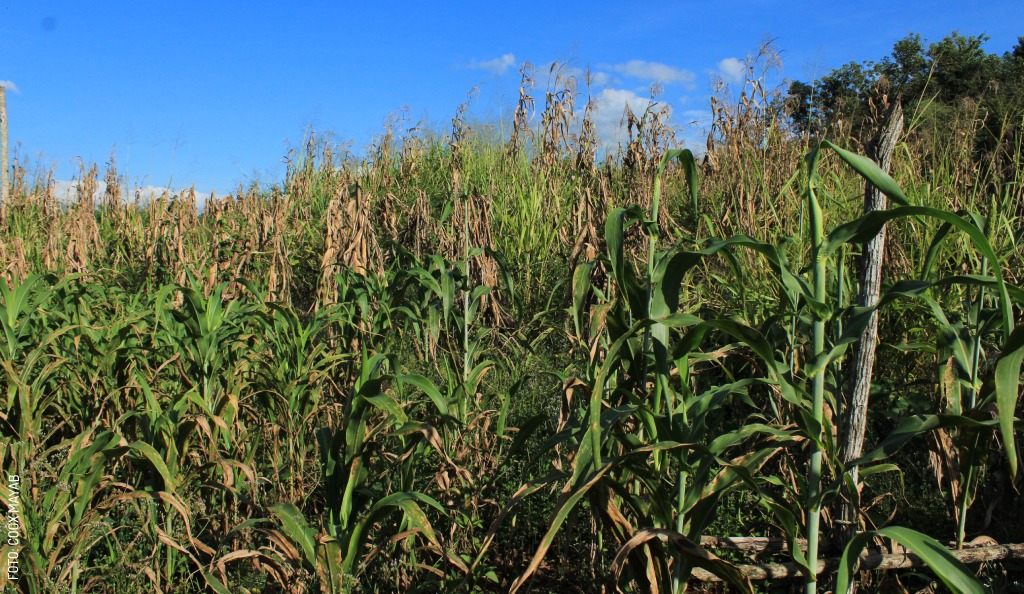
Cabañuelas: Predicciones del Clima para 2026
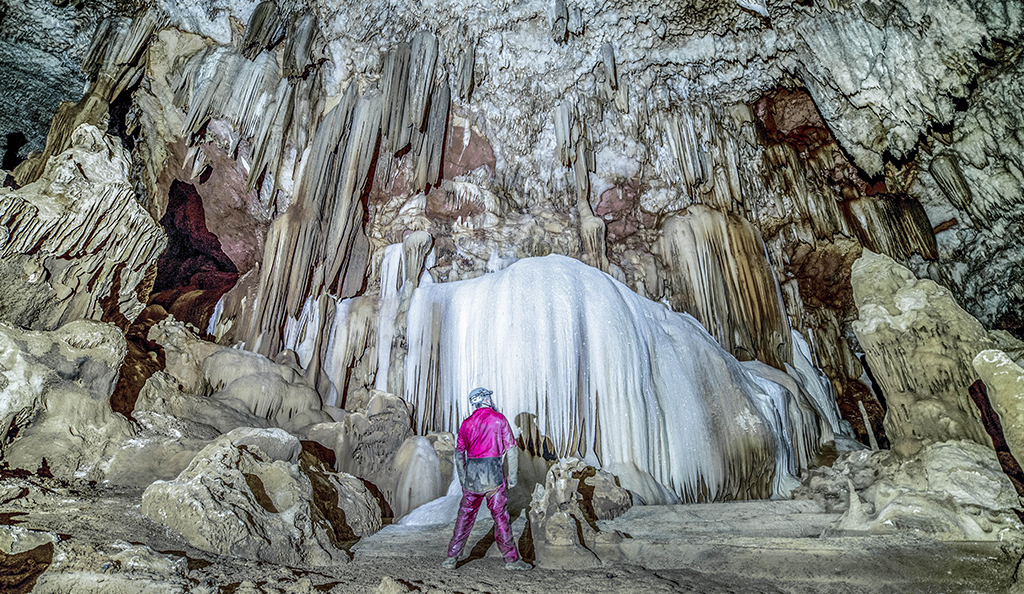
Conociendo Yucatán: Una escapada de dos días por el Sur de Yucatán
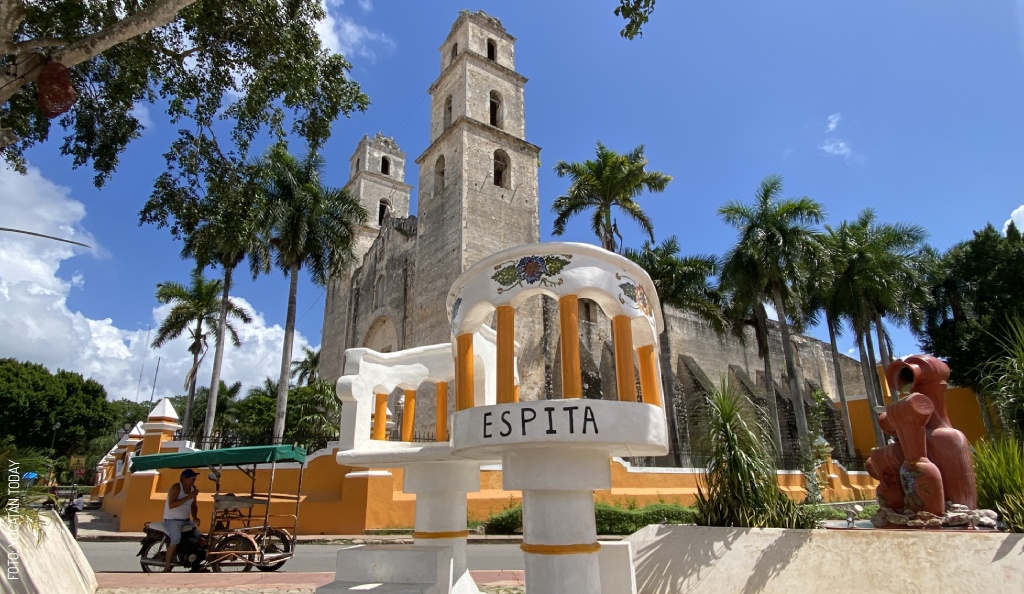
12 propósitos de Año Nuevo al estilo yucateco
Related Articles
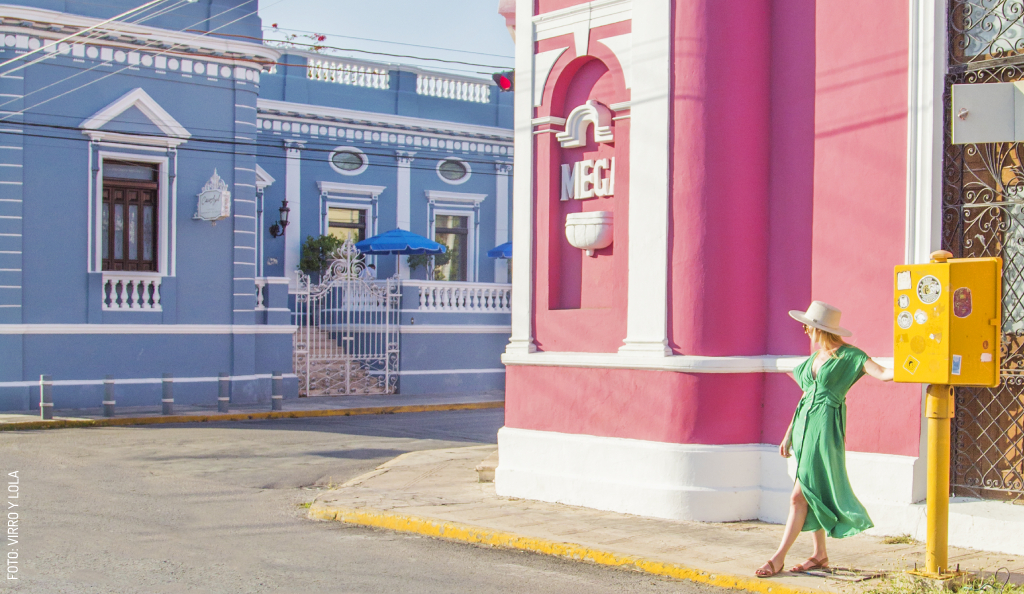
The Ultimate Yucatán Bucket List: From Ancient Maya Ruins to Legendary Cuisine
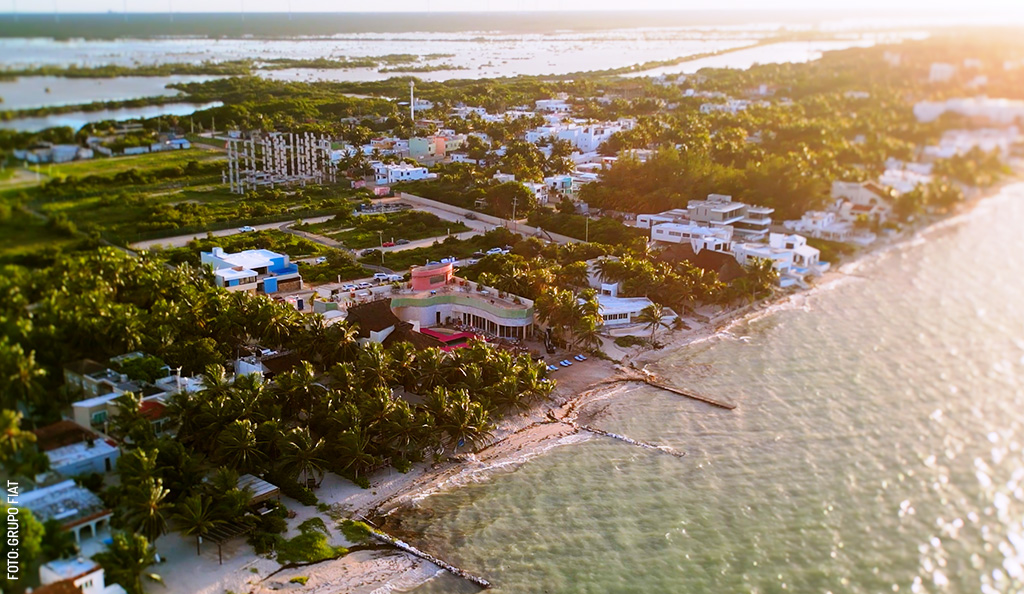
Cabo Coral and the Secret Behind Its Construction
